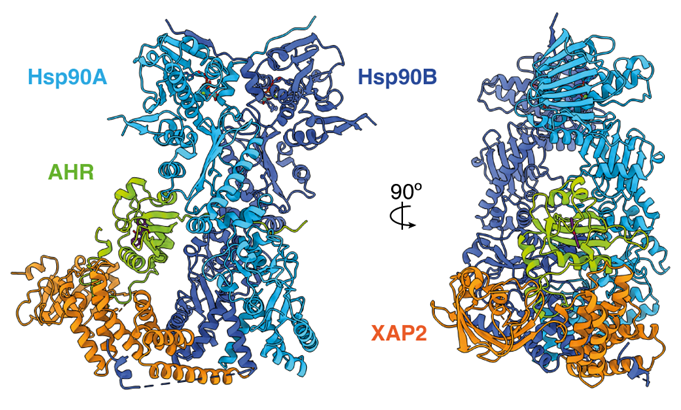Living organisms have evolved protein sensors that help them adapt to their environment. The aromatic hydrocarbon receptor (AHR) is an emblematic member of this class of proteins. AHR is a ligand-dependent transcription factor involved in a wide range of physiological and pathological processes in response to hundreds of chemical or natural substances. Notably, AHR is historically known as the receptor for many pollutants such as dioxin or PCBs, mediating both their metabolism and deleterious effects. On the other hand, many food components or their metabolites from our intestinal microbiota have been described as ligands of AHR with beneficial effects on health. Dysregulation of AHR function has been implicated in the development of various pathologies such as cancers and chronic inflammatory bowel diseases. Until now, the high instability of this protein and the resulting lack of high-resolution structural data limited our understanding of the molecular mechanisms by which AHR transcriptional activity can be modulated by such a diversity of compounds. Using cryo-electron microscopy, we solved the 3D structure of a functional complex comprising AHR bound to one of its natural ligands, indirubin, the chaperone Hsp90 and the co-chaperone XAP2. The structure at a resolution of 2.8 Å reveals a concerted action of Hsp90 and XAP2 to maintain the receptor in a stable and functional form. More importantly, it provides the first experimental visualization of the ligand binding domain of AHR and reveals a unique organization of the pocket where the small regulatory molecules bind. By revealing the molecular determinants of ligand-binding specificity and promiscuity of the receptor, our study rationalizes more than forty years of biochemical data and sheds new light on the function of this important receptor for the regulation of the interactions between the host and its environment. Furthermore, this atomic-scale information provides a rational framework for better understanding the impact of environmental pollutants on human health and the design of drugs targeting AHR.
Full article can be found here: https://rdcu.be/cZOTT


